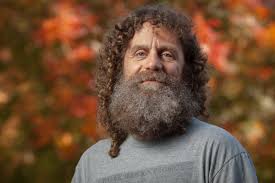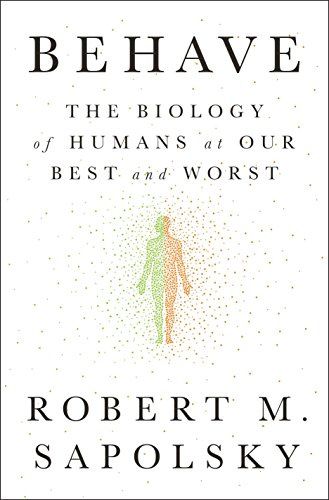Criminology
Is There a Biological Case for Criminal Justice Reform?
“We’ve successfully banished the notion of punishment in that realm,” Sapolsky writes. “It may take centuries, but we can do the same in all our current arenas of punishment.”

Tell a woman the story of Christ’s crucifixion, and if she doesn’t cry, she’s a witch. In the 1500s, women who failed this test were burned alive.
The test—clearly and painfully faulty—was not publicly questioned until Dutch physician Johann Weyer wrote “De Praestigiis Daemonum” (or “On the Tricks of Demons”) in 1564. Weyer correctly argued that many older women couldn’t cry due to atrophy of their lachrymal glands. Prosecutors were presented with a dilemma: reform the witch trial system or potentially kill innocent women. A paltry sum of sanity was brought to the system, and hundreds of potential deaths were prevented.

Stanford University neurobiology professor Robert Sapolsky believes that today’s U.S. criminal justice system has similar biological blind spots. Just as witch prosecutors didn’t know about the lachrymal glands’ connection to tears, we don’t fully understand an untold number of connections between DNA, the brain, hormones, and other dynamic aspects of the human body. In Sapolsky’s latest book, Behave: The Biology of Humans at Our Best and Worst, he argues that our justice system falls into the same traps as the witch prosecutors of the fifteenth century—we send people to prison, even death, based on incomplete evidence.
For example, 351 people have been exonerated via DNA evidence by the Innocence Project—including 20 who sat on death row. They’re lucky, but how many innocent lives have met unfortunate ends? Or consider the cruel fact that 2 million people with mental illness are booked into jails each year. Once inside, 83% of mentally ill inmates have no access to treatment, per the National Alliance on Mental Illness, likely keeping them in a cycle of recidivism.
“The current criminal justice system needs to be abolished and replaced with something that, while having some broad features in common with the current system, would have utterly different underpinnings,” Sapolsky writes in Behave.
After centuries of judicial burnings and killings based on faulty evidence, Sapolsky believes that we’ve set ourselves apart from our ancestors with a simple phrase: “It’s not her; it’s her disease.” A systematic focus on disease and treatment, rather than evil and punishment, would save lives and prevent needless suffering.
However, the brain and biology remain largely misunderstood in U.S. law. This misunderstanding stems from a common belief in mitigated free will, Sapolsky writes, a belief that biology influences our actions, but doesn’t make our final decision. Our final decisions are made somewhere beyond biology, according to mitigated free will believers, by something that allows us to control our actions. We may not be able to completely control our actions during seizures, while we’re drunk, or when a brain tumor is pressing on our frontal cortex, they say, but we can give a vehement “no” to the voices in our head whispering at us to kill our family.
Mitigated free will is how most people make sense of this confluence of biology and free will, Sapolsky writes. If someone believes that biology determines 99.9 percent of their actions and also believes that free will can determine 0.1 percent of their decisions, Sapolsky says they are “tacitly invoking a homunculus operating outside of the rules of science.”
If free will does exist, new scientific discoveries are whittling it into smaller pieces, Sapolsky writes. Two hundred years ago, we learned that the frontal cortex affects our control of appropriate social behavior, changing how we consider brain damage. Less than 70 years ago, we discovered that the root of schizophrenia lies in biochemistry, not hell or heaven. With more biological discoveries to come, can we confidently use mitigated free will arguments to decide who lives, who dies, and who goes free?

“[If] you believe that there will be the accrual of any more knowledge, you’ve just committed to either the view that any evidence for free will ultimately will be eliminated or the view that, at the very least, the homunculus will be jammed into even tinier places,” Sapolsky writes;
And with either of those views, you’ve agreed that something else is virtually guaranteed: that people in the future will look back at us as we do at purveyors of leeches and bloodletting and trepanation, as we look back at the fifteenth-century experts who spent their days condemning witches, that those people in the future will consider us and think, ‘My God, the things they didn’t know then. The harm that they did.’
This homunculus—mitigated free will—has no biological proof, Sapolsky argues, but we do have biological proof that our decisions and actions are influenced by a combination of our DNA, brain, hormones, nervous system, how we grew up, and what happened while we were still growing in our mother’s uterus. A single split-second decision can be years in the making; it is multifactorial, containing no simple answers, as Sapolsky argues throughout Behave.

Most people believe that this argument allows criminals to escape culpability. Typically, a question from the dissenter follows: “If we can’t hold criminals responsible for their actions, are we expected to let them run loose in the streets?” Clearly, no rational person wants violent criminals to wreak havoc in the streets, Sapolsky writes. Someone who commits a heinous crime must be kept away from citizens, even if their prefrontal cortex is damaged; neuroscience and biology cannot erode the safety of society. Violent individuals, Sapolsky writes, “can no more be allowed to walk the streets than you can allow a car whose brakes are faulty to be driven. Rehabilitate such people if you can, send them to the Island of Misfit Toys forever if you can’t and they are destined to remain dangerous.”
This follows even without the available medical diagnoses to find the exact problem with a violent individual. Sapolsky writes that the mechanics from the broken car analogy wouldn’t call the vehicle “evil” if they couldn’t pinpoint a mechanical issue. Perhaps there’s a problem with how the car was built, perhaps the car is affected by an unknown pollutant, or perhaps there is a diagnostic issue that simply has not yet been solved. Many people find this comparison dehumanizing, Sapolsky writes, but it “is a hell of a lot more humane than demonizing and sermonizing them as sinners.”
Instead of allowing criminals to run free, Sapolsky offers a suggestion that he believes would “change everything”: remove the punisher mindset from the criminal justice system. Punishment feels good for all people, Sapolsky says, not just for blood lusters and witch hunters. It’s a deep, atavistic pleasure: “Put people in brain scanners, give them scenarios of norm violations. Decision making about culpability for the violation correlates with activity in the [dorsolateral prefrontal cortex],” Sapolsky says. “But decision making about appropriate punishment activates the [ventromedial prefrontal cortex], along with the amygdala and insula; the more activation, the more punishment.”
Even if punishment is necessary to improve behavior in violent individuals, there’s no place for punishment as a virtue, Sapolsky writes. The reason is simple: We used to punish people for having seizures; now we give them medication, take their car keys away, and tell them not to operate heavy machinery.
“We’ve successfully banished the notion of punishment in that realm,” Sapolsky writes. “It may take centuries, but we can do the same in all our current arenas of punishment.”
Sapolsky admits that removing the punisher mentality may create a practical challenge as there are studies that both support and contradict the hypothesis that criminal punishment discourages law breaking. Perhaps some amount of conventional punishment will still be necessary to keep peace in society, he writes, but that punishment must be stripped of the beliefs that people deserve to be punished and that punishing them is virtuous. Bloodlust, science, and criminal justice cannot mix.






